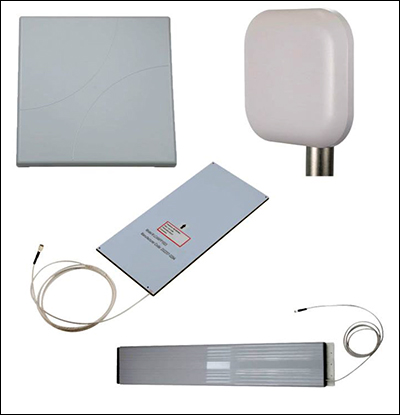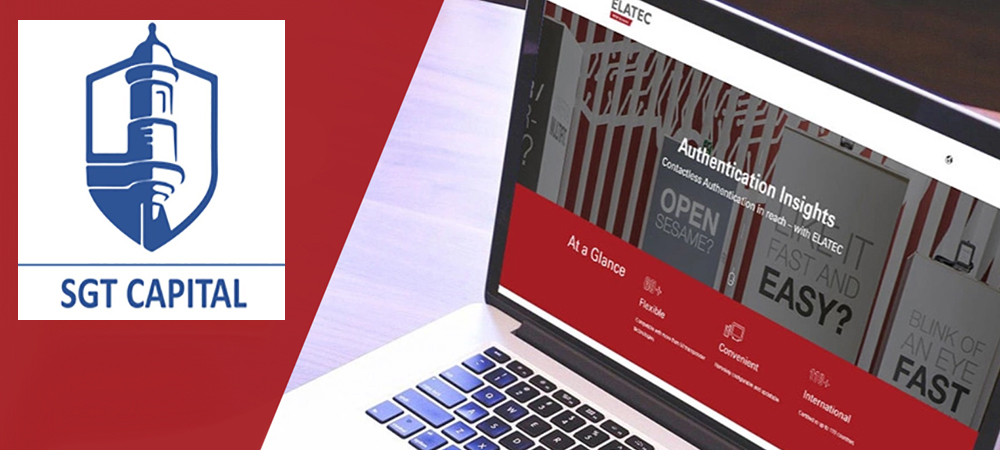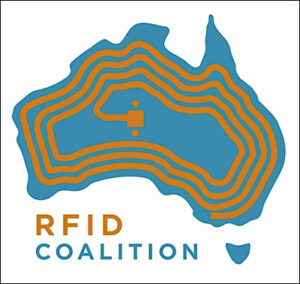Jun 15, 2023Presented here are recent news announcements in the radio frequency identification and Internet of Things industries.
Pasternack Debuts New RFID Antenna Line
 Infinite Electronics brand Pasternack, a provider of RF, microwave and millimeter-wave products, has announced its latest RFID antennas, designed to amplify radio frequency identification (RFID) applications, including inventory control, asset tracking, identification validation and other use cases. The antennas operate within the 900 and 2400 MHz frequency bands, the company reports, and are designed for efficient RFID tag reading.
Infinite Electronics brand Pasternack, a provider of RF, microwave and millimeter-wave products, has announced its latest RFID antennas, designed to amplify radio frequency identification (RFID) applications, including inventory control, asset tracking, identification validation and other use cases. The antennas operate within the 900 and 2400 MHz frequency bands, the company reports, and are designed for efficient RFID tag reading.
Outfitted with SMA female, N female and RP TNC male connectors, these antennas provide interoperability with a range of RFID readers. The antennas utilize right-hand circular polarization for signal reception and data capture. This technology, combined with high-gain output, low-voltage standing-wave ratio and expanded beamwidth, is designed to bolster scan radius and amplify the overall effectiveness of RFID systems, the company explains.
"Recognizing the critical role of effective and reliable RFID tag scanning across industries, our new antennas are designed to deliver on these fronts, offering a robust solution for seamless data gathering," said Kevin Hietpas, Pasternack's product line manager, in a prepared statement. The company's new RFID antennas are in stock now and are available for same-day shipping.
SGT Capital Acquires Secure-Access Solutions Firm Elatec
SGT Capital has reached a definitive agreement to acquire Elatec from growth equity investor Summit Partners. SGT Capital invests in midsized companies and helps management teams accelerate international expansion. The transaction, valued at approximately €400 million ($428 million), is subject to customary regulatory approvals. SGT Capital was advised by Willkie Farr & Gallagher (legal), E&Y (financial), Grant Thornton (tax), Roland Berger (commercial) and Consileon (technology).
Headquartered in Germany, Elatec is an international developer and supplier of secure physical and digital-access solutions. Robert Helgerth, Elatec's CEO, said in a prepared statement, "We are moving at a fast pace into Elatec's next phase of growth, with our primary focus on continued technical innovation plus international expansion. SGT Capital's ownership and support is key to sustaining our performance and momentum."

Elatec provides RFID, Bluetooth Low Energy (BLE) and Near Field Communication (NFC) reader hardware for user identification, as well as a cloud-based Internet of Things (IoT) platform with software-as-a-service (SaaS) device-management solutions. Elatec has more than 150 employees worldwide. It supports more than 60 RFID card-type technologies, plus BLE and NFC, and its products are certified in 110 countries.
"Elatec is a market leader in secure physical and digital-access solutions globally," said Joseph Pacini, SGT Capital's co-managing partner, in the prepared statement, "and combines a strong IoT platform with SaaS device-management and mobile-authentication technology solutions that are essential for the structural global growth of increasing interconnectivity and the need for increased physical and cyber security."
Gerhard Burits, Elatec's CFO, added in the statement, "Elatec is poised for significant future growth given our innovation, as well as the structural growth in our existing markets, and we are grateful to our clients, colleagues and partners for their support and commitment."
AsReader, Xemelgo App Helps Manufacturers Meet Walmart Mandate
In 2022, Walmart announced that it would require suppliers to RFID-tag all products for sale before shipping them (see Retailer Mandates Are Like Dominoes). Many suppliers worked to meet the retailer's demand, but soon discovered obstacles in tagging their products, making it difficult for some suppliers and impossible for others. The main obstacle has been source-tagging, as some tags have duplicate information, some have the wrong encoding and others have no data imprinted on the tags at all.

AsReader, working with partner Xemelgo, has thus developed a free app called the QC Checker. Using AsReader's sled, pocket, dock-type and gun-type scanning devices, suppliers can read an RFID tag, discover encoding errors and duplicated tags, and confirm the correct information is encoded. Users can determine whether a tag has an Electronic Product Code (EPC) and whether that encoded EPC matches the correct universal product code (UPC). The app can then help them locate multiple tags that may have been encoded with the same EPC.
The app works with AsReader's ASR-0230D (barcode and RFID) and ASR-L251G gun and ASR-030D (RFID-only) sleds, pictured above. RFID is becoming ubiquitous, and Walmart champions the technology. "We have seen dramatic results in our ability to ensure product is available for our customers, leading to improved online order fulfillment and customer satisfaction," said Shelly McDougal, the retailer's senior director of merchandising, in a 2022 RFID Journal article (see Walmart Recommits to RFID).
In the prepared statement, AsReader's Kris Doane said many suppliers have been frustrated by the situation. "Meeting the Walmart mandate for manufacturers set a high bar," he explained. "Some have never worked with RFID tagging before, and this isn't something you enter into lightly. Suppliers may need some added support and navigation to ensure they're providing the correct info to Walmart, both for the staff and for their customers, and the QC Checker is here to do this for them."
Digital Twin Consortium Publishes Reality-Capture User Guide
The Digital Twin Consortium (DTC) has published its "Industry User Guide for Applying Reality Capture to Tenant Improvement Projects," supplementing its "Reality Capture: A Digital Twin Foundation" white paper. The guide shows tenant improvement stakeholders (owners, architects, engineers and contractors) how they can use reality capture within a building to modernize and improve the efficiency of their projects.
 Reality capture is a critical component of a digital twin's lifecycle, the Consortium explains, allowing tenant improvement projects to benefit from and contribute to developing digital twins. It differs across various industries, the DTC notes, each of which has use unique cases that drive hardware and software selections, with specific capture frequencies and accuracy requirements.
Reality capture is a critical component of a digital twin's lifecycle, the Consortium explains, allowing tenant improvement projects to benefit from and contribute to developing digital twins. It differs across various industries, the DTC notes, each of which has use unique cases that drive hardware and software selections, with specific capture frequencies and accuracy requirements.
"Reality-capture technology embodies a set of devices and processes that are used to collect the conditions of physical objects, assets or space," said Dan Isaacs, the DTC's general manager and CTO, in a prepared statement. "When stakeholders implement and manage them correctly, the tools accurately and efficiently create digital duplicates of physical things, such as small objects, rooms and buildings. Reality capture provides contextual insight and awareness through the transparent representation of real-world conditions."
John Niles, a technology consultant at Gafcon Digital, added in the statement, "Tenant improvement reality capture can help projects in many ways. Every visible feature of the existing conditions can be captured and shared across the team as a visual communication tool, and by analyzing scan data, users can extract information like floor flatness and clashes detection to surface potential issues with proposed design. It's the foundation for the digital twin."
GS1 Australia Announces RFID Tech Expo
 GS1 Australia has organized the RFID Coalition Tech Expo as an opportunity for attendees to hear from industry experts presenting their RFID success stories, as well as network with like-minded individuals and meet dedicated RFID vendors able to help them with their specific needs. The event will take place on Aug. 2, 2023, from 9 AM to 1.30 PM, and is returning to Sydney, Australia, after a four-year access. Physical attendance will be at the Pullman Sydney Airport, but those unable to attend in person will be able to select virtual tickets and connect via Zoom.
GS1 Australia has organized the RFID Coalition Tech Expo as an opportunity for attendees to hear from industry experts presenting their RFID success stories, as well as network with like-minded individuals and meet dedicated RFID vendors able to help them with their specific needs. The event will take place on Aug. 2, 2023, from 9 AM to 1.30 PM, and is returning to Sydney, Australia, after a four-year access. Physical attendance will be at the Pullman Sydney Airport, but those unable to attend in person will be able to select virtual tickets and connect via Zoom.
Anthony Chesler, Thread Together's CEO, and Peter Reinke, Ramp RFID Solutions' CEO, will offer a session titled "Innovating Charity: How RFID Technology Is Transforming Thread Together." Then, Andrew Sill, Sill Marketing's managing director, will be the speaker for a session called "RFID in the Real World." Finally, a panel discussion will feature Myer's Alex van Diggelen, Puma's John Leorke and Thomas Warburton's Arnaud Gay, along with two solution providers chosen at random from a business card draw.
Powercast, Powermat Partner on Wireless Charging Solutions
Two wireless power technology providers—Powercast, with its long-range, over-the-air RF solutions, and Powermat, with its SmartInductive hybrid inductive-resonance system—have partnered to create a single team able to implement short- and long-range wireless power designs customized per clients' applications. The partnership will leverage Powercast's engineering and productization services to support customers as needed, from proof-of-concept to prototyping and production. The wireless power technologies enable sustainable, untethered devices that use rechargeable batteries (or no batteries at all) to eliminate e-waste and replacement hassles.
Powercast and Powermat say they will work together to create a ubiquitous, wire-free and accessible ecosystem. "The convenience of a one-stop-wireless-power-shop has not existed before," said Charles Goetz, Powercast's CEO, in a prepared statement. "First, since our partnership covers the entire spectrum of wireless power, customers can ditch researching solutions themselves and relax knowing we'll recommend the best fit for them. Second, whether you're a startup or Fortune 500, our productization team can help reduce costs and speed time to market."
The companies' transmitters send energy to receivers that convert it into power, but they differ in strength and transfer distance, and thus can fit different applications. The SmartInductive Tx and Rx solutions must align within 8 inches. The solutions can transfer power at a distance of up to 120 feet, Powercast reports, while providing power levels ranging from hundreds of milliwatts to single-digit microwatts, depending on distance.
"Our IP licensing business model has been successful as our technology is embedded in 800 million smartphones and charging surfaces in 8 million cars, and in 40 million devices like robots, e-bikes and IoT and medical devices," added Kfir Abuhatzira, Powermat's CEO, in the statement. "But we are excited to be able to expand our services by partnering with Powercast whose dedicated design, engineering and manufacturing division can help customers wanting productization support."
The SmartInductive hybrid inductive-resonance technology enables scalable, wireless power applications capable of penetrating 8 inches of wall and windows, and it is offered in reference design platforms ranging from 5 watts of consumer-grade applications to 600-watt industrial-grade applications such as telecommunications, robotics, micro-mobility and medical devices. RF technology enables one-to-many charging, meaning a single transmitter can charge multiple devices within its charging zone. Examples include home automation sensor networks, television remotes, electric toothbrushes, headphones and smart watches.

